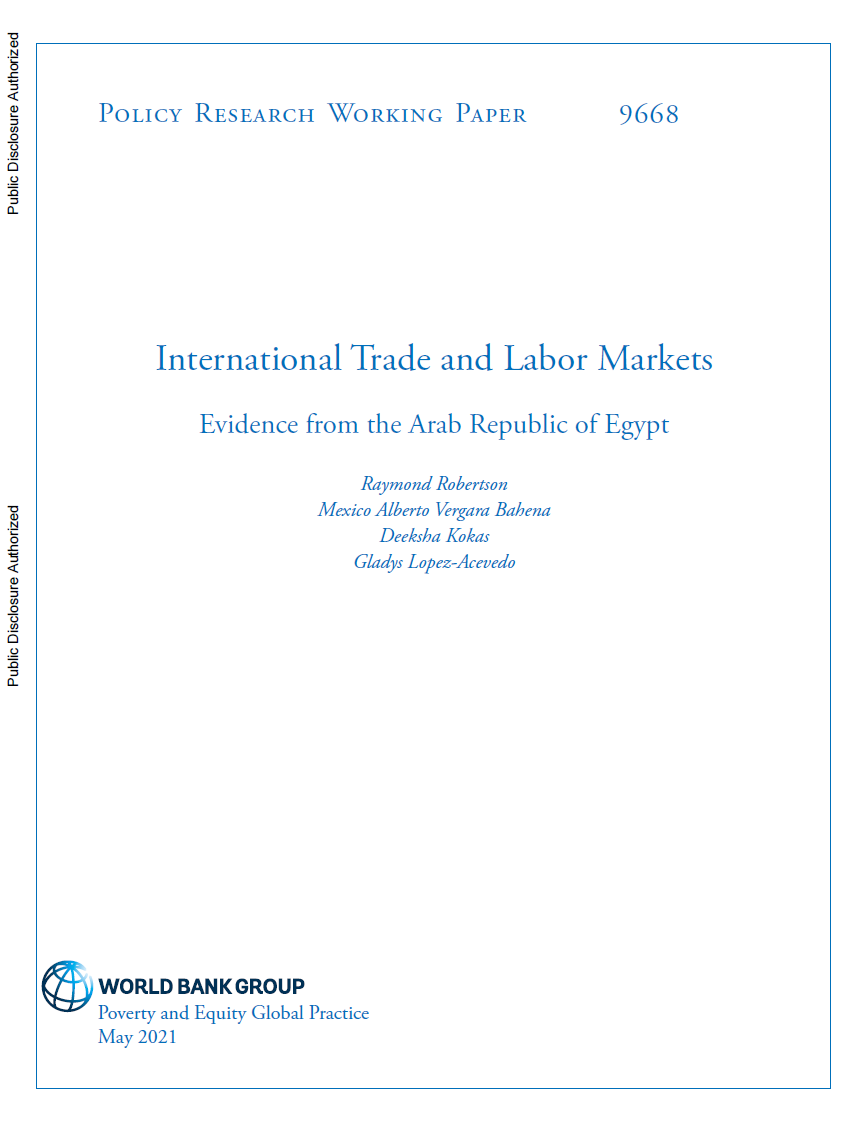世界银行《国际贸易与劳动力市场:来自埃及的证据》
发布时间:2025-09-07
浏览次数:104
Since the early 1990s, some developing countries have experienced a coincidence of rising exports—especially those related to global value chains—and improved labor market outcomes. During 2000–10,···
Since the early 1990s, some developing countries have experienced a coincidence of rising exports—especially those related to global value chains—and improved labor market outcomes. During 2000–10, rising trade was associated with falling poverty and inequality in many developing countries. However, the Arab Republic of Egypt was not one of these countries, although it signed several trade agreements. The lack of trade-related improvements in labor market outcomes—including poverty, inequality, average wage levels, informality, and female labor force participation—could be explained by at least two possibilities. First, it is possible that trade agreements did not produce the same increase in trade for Egypt as for other countries. Second, it is possible that exports do not generate the same kinds of changes in labor market outcomes as experienced in other countries. After presenting the trends in key labor market outcomes over 2000–19, this paper evaluates both hypotheses. Using a gravity model approach, the results suggest that the changes in Egypt’s exports following trade agreements are above internationally estimated averages. Second, the results from a Bartik approach find no significant relationship between rising exports and wages, informality, or female labor force participation. Additional analysis shows that Egypt’s average wage levels are among the highest among countries that export the same goods exported by Egypt, possibly suggesting that Egypt has a relatively weak comparative advantage in currently exported goods, and thus might need to rethink its export basket.
自20世纪90年代初以来,部分发展中国家经历了出口增长(特别是全球价值链相关出口)与劳动力市场改善并行的现象。2000-2010年间,在许多发展中国家,贸易增长伴随着贫困和不平等现象的减少。然而,尽管签署了多项贸易协定,阿拉伯埃及共和国却未能跻身这一行列。埃及在贫困、不平等、平均工资水平、非正规就业和女性劳动力参与率等劳动力市场指标上未能实现与贸易相关的改善,可能至少存在两种解释:其一,贸易协定未能像其他国家那样推动埃及贸易增长;其二,出口可能未能在埃及产生与其他国家类似的劳动力市场效应。本文在呈现2000-2019年关键劳动力市场指标变化趋势后,对这两种假设进行了验证。通过引力模型分析发现,埃及在签署贸易协定后的出口增长幅度高于国际预估平均水平。而采用巴蒂克方法的研究则表明,出口增长与工资水平、非正规就业或女性劳动力参与率之间不存在显著关联。进一步分析显示,在出口同类商品的国家中,埃及的平均工资水平处于高位,这可能暗示埃及在当前出口商品上具有的相对比较优势较弱,因而需要重新规划其出口结构。https://openknowledge.worldbank.org/entities/publication/4338ed40-ef6f-569f-b1d6-588e8a072aec




















